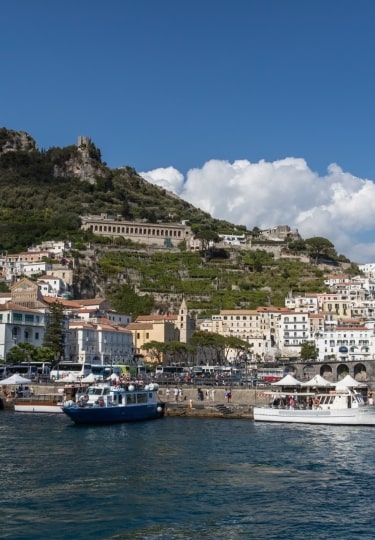You could make a great list of the best things to do on the Amalfi Coast just in Amalfi itself. Add in the attractions of nearby delights such as the towns of Positano, Ravello, or Vietri sul Mare, and the choice becomes even more difficult.
This is a region where every turn in the road seems to deliver a finer view; where every town has food, wine or some regional specialty even better than the last one. Forested cliffs plunge straight into an aquamarine sea, while lemons and olives are grown on mountain terraces.
Add in a great climate, wonderful old buildings, fascinating museums, not to mention the Italian passion for life, and you have somewhere very special. No wonder the Amalfi Coast is one of the world’s most famous, and most visited, regions.
Here is a list of the 14 best things to do on the Amalfi Coast.
Get Lost in Amalfi
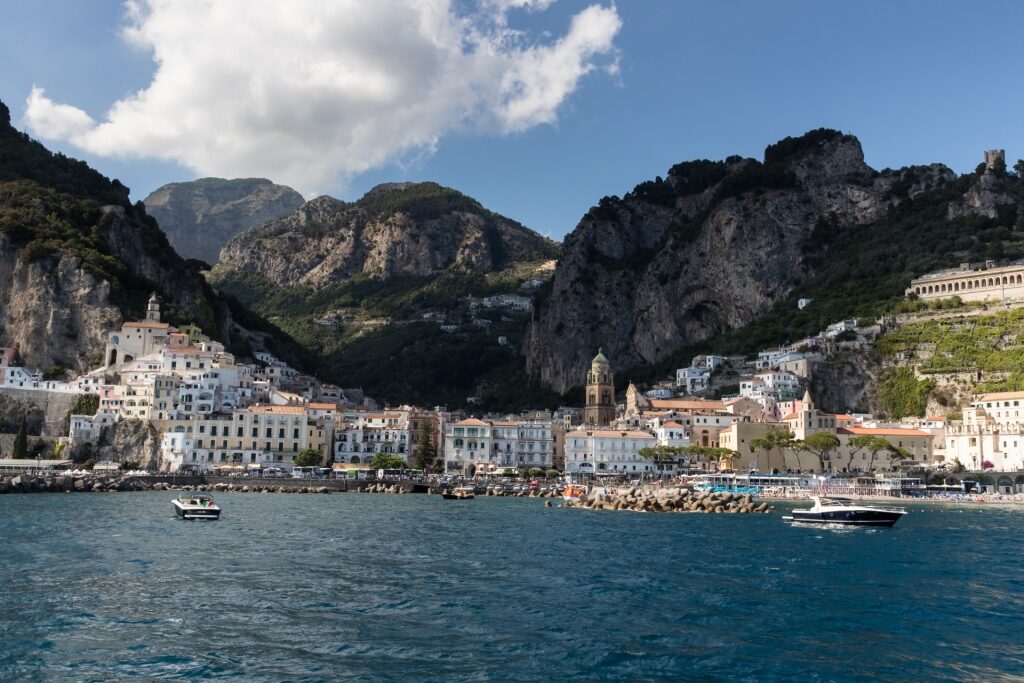
Amalfi
Perhaps the most surprising thing about Amalfi is that it lives up to its reputation. It’s a vision of whitewashed houses, laden with bright, potted plants, and exquisite local shops in Italy.
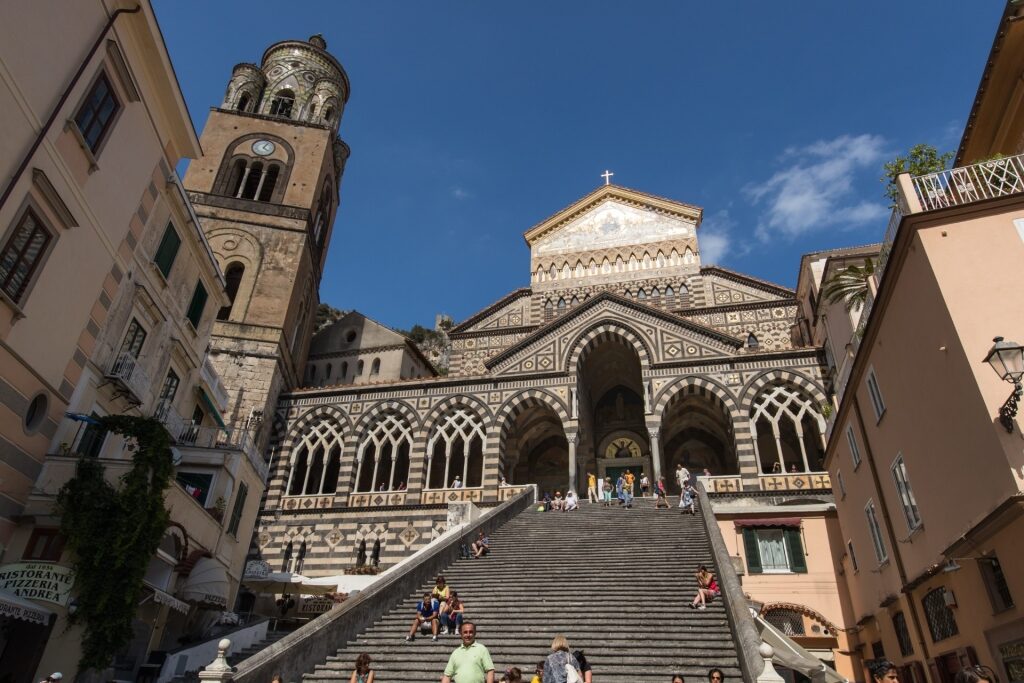
Cattedrale di Sant’Andrea, Amalfi
All steps lead to the Cattedrale di Sant’Andrea, somehow squeezed into a space above the Piazza del Duomo. It’s hard to believe this is real, not the fantasy of a movie set designer.
The cathedral is dedicated to St Andrew, whose relics are kept in the crypt. Pass through the 11th-century brass doors to see the beautiful interior with its Moorish arches and painted ceiling.
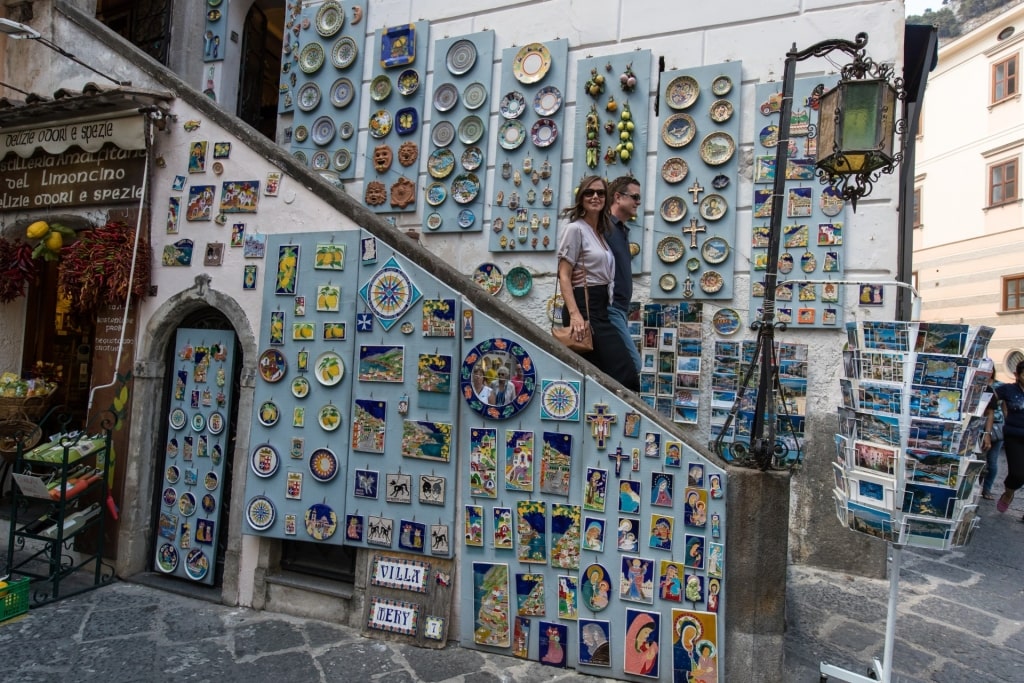
Amalfi
Cobbled streets wander off, taking you on mini adventures. Follow one to discover a cozy café, a shop selling beautiful, handmade paper, for which the town is famed, or a lovely view.
See the Tiles of Vietri Sul Mare
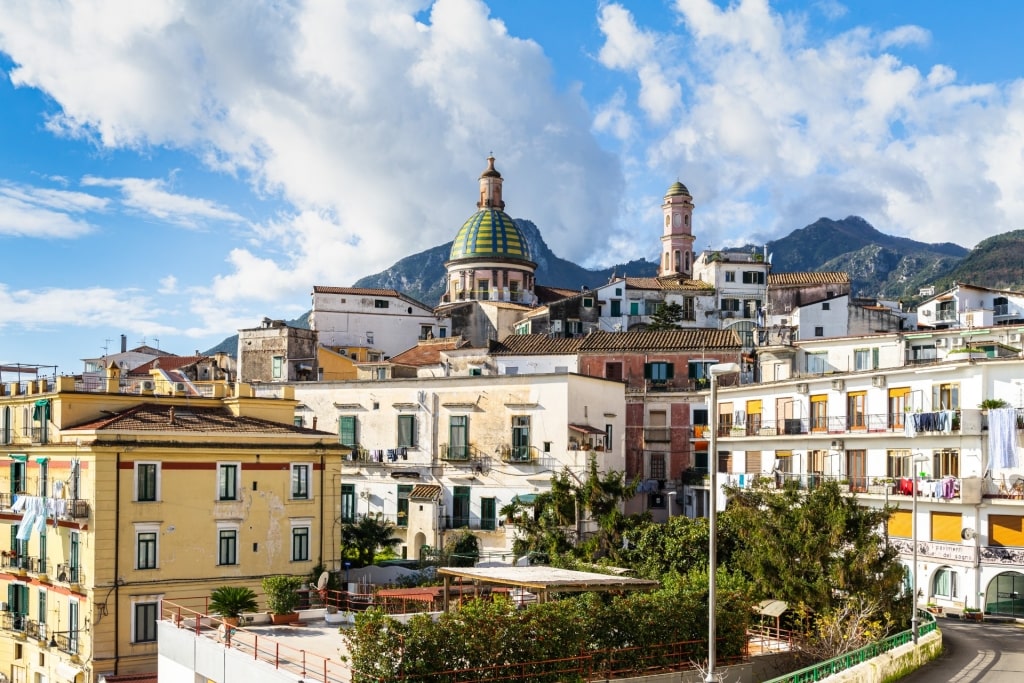
Vietri Sul Mare
The eastern end of the Amalfi Coast is marked by the town of Vietri sul Mare, famous for its tiles and ceramics, used to decorate hotels and restaurants throughout this region of Southern Italy.
Examples of ceramic art can be seen on the exterior of the town’s churches. The distinctive Vietri yellow and blue tiles cover the dome of San Giovanni Battista, dedicated to the patron of the town.
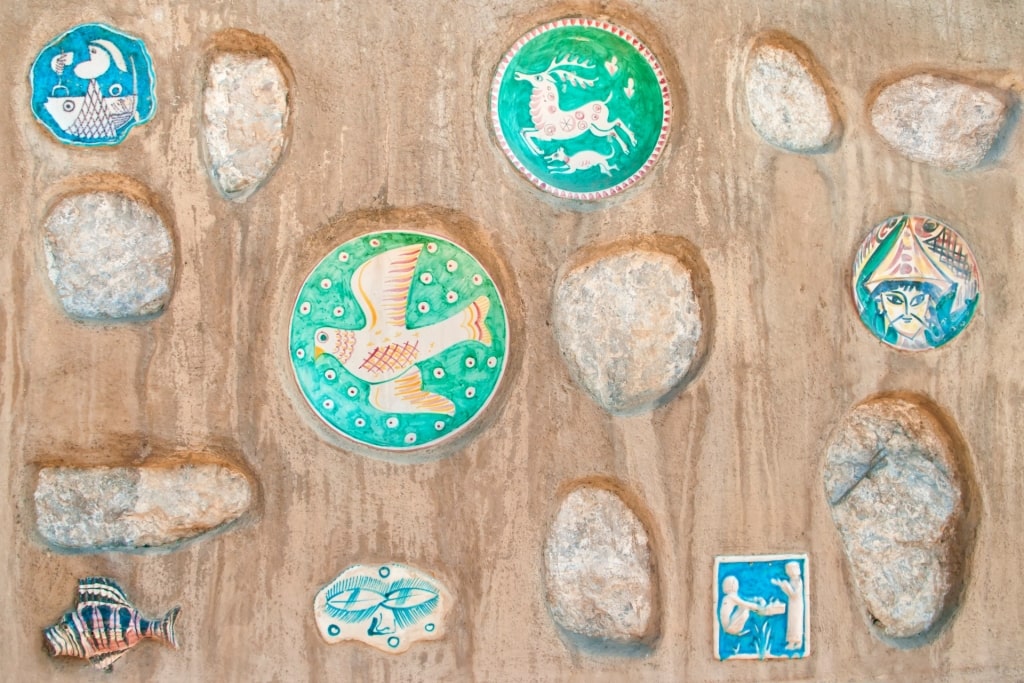
Tile mural in Vietri Sul Mare
Hand-painted tiles making up murals, traditionally religious scenes but now often more modern images, are the peak of this art form. As you wander further around the town, you’ll find many fine examples.
Find out more at the Museo Provinciale della Ceramica in a former watchtower of the beautiful Villa Guariglia, in Raito. Even better, visit one of the many producers using handmade techniques handed down through generations.
Enjoy the Beach of Maiori
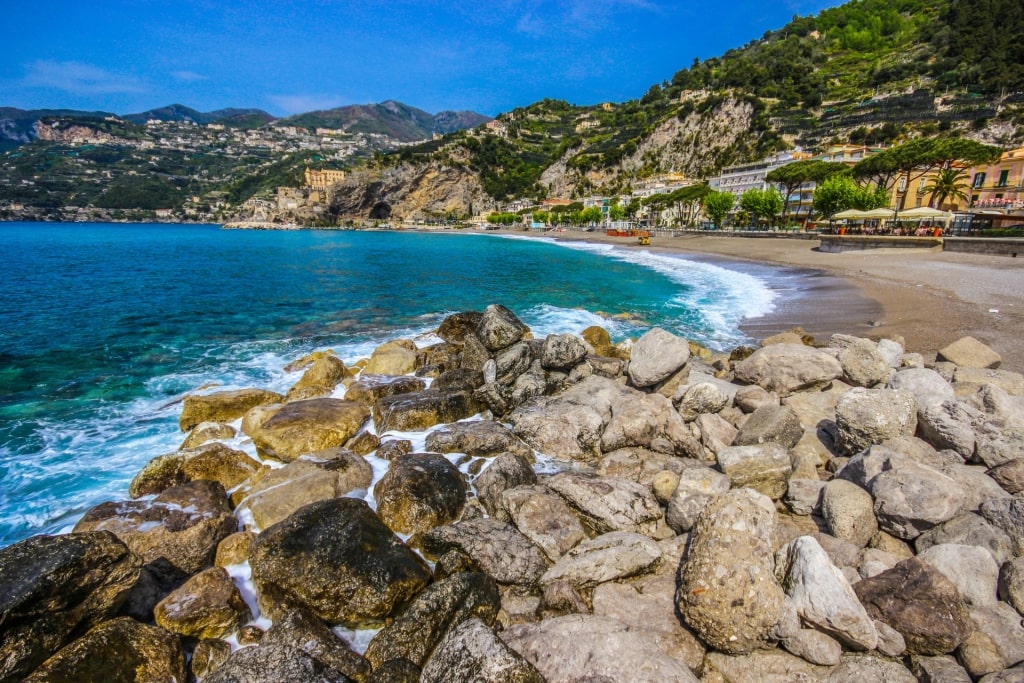
Maiori
The small town of Maiori is fronted by the longest of the Amalfi Coast’s beaches. With more than half a mile of sand, it’s a rare size in this mountainous region. A great choice of bars, cafés and restaurants line the beach.
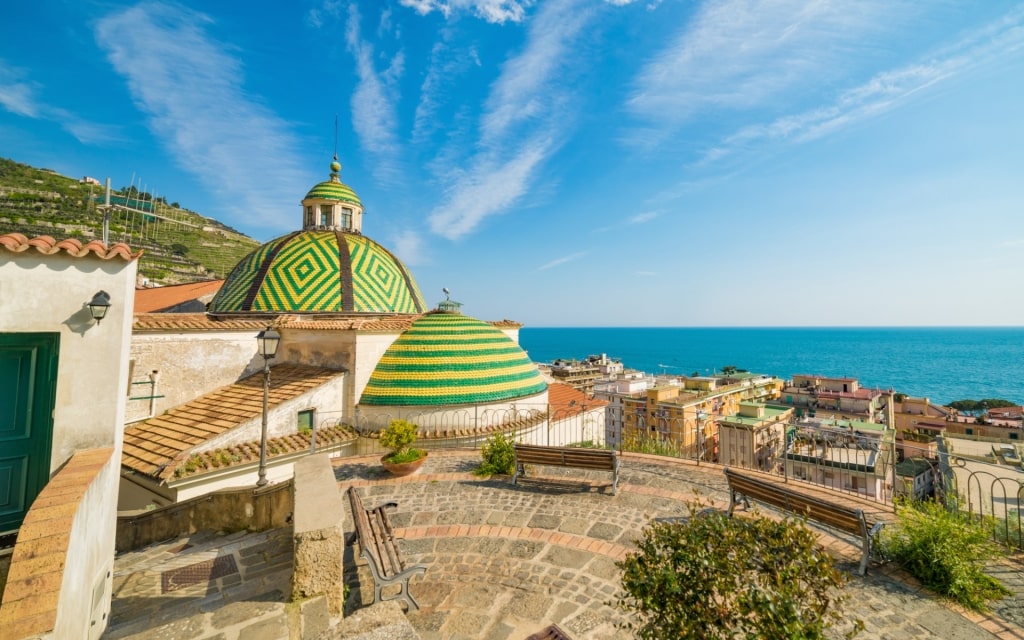
Santa Maria a Mare Church, Maiori
Maiori had a starring role in the cult films of Roberto Rossellini, celebrated with an annual film festival. His camera lingered over such picturesque sights as the coastal towers, and 13th-century Santa Maria a Mare church.
You can explore this beautiful town and the surrounding area on seven marked walking paths. All start from a prominent plinth on the seafront.
Buy Scialatielli in Minori
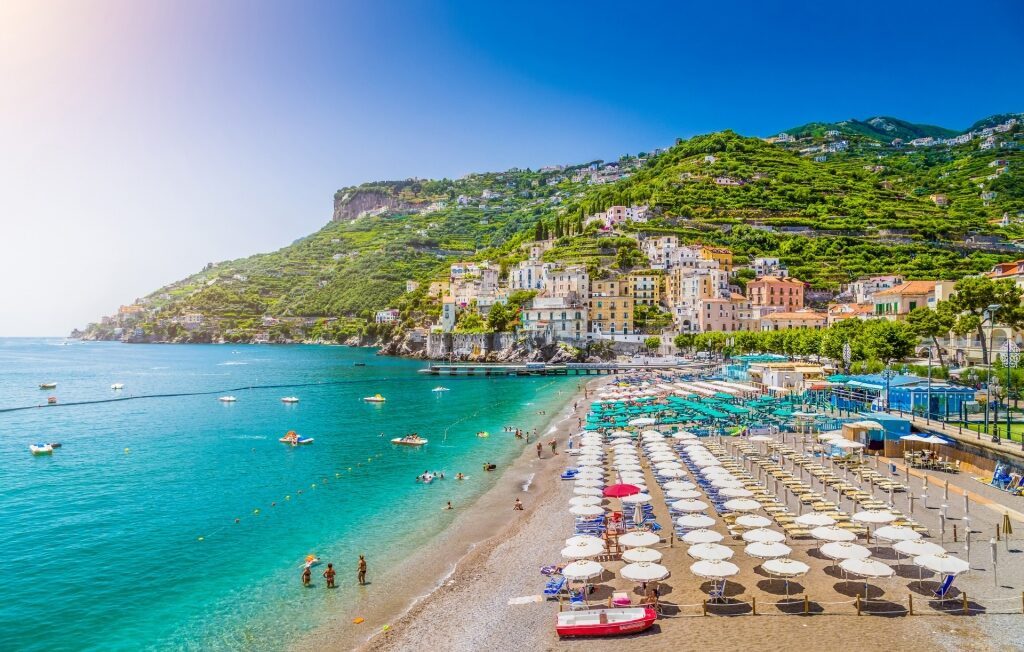
Minori
Minori, the “Regina Minor” to the “Regina Maior” of Maiori, is equally rich in churches and monuments. It’s also home to one of the best beaches in Italy, popular with Italian vacationers.
In fact, if there is such a thing as an undiscovered gem on the Amalfi Coast, Minori is it. It has a scruffier, more lived-in appearance than many better-known places, and may be all the better for it.
That’s despite it being a holiday resort since Roman times. Visit the first-century Villa Roma Antiquarium to see how Roman nobles enjoyed themselves here before Vesuvius erupted.
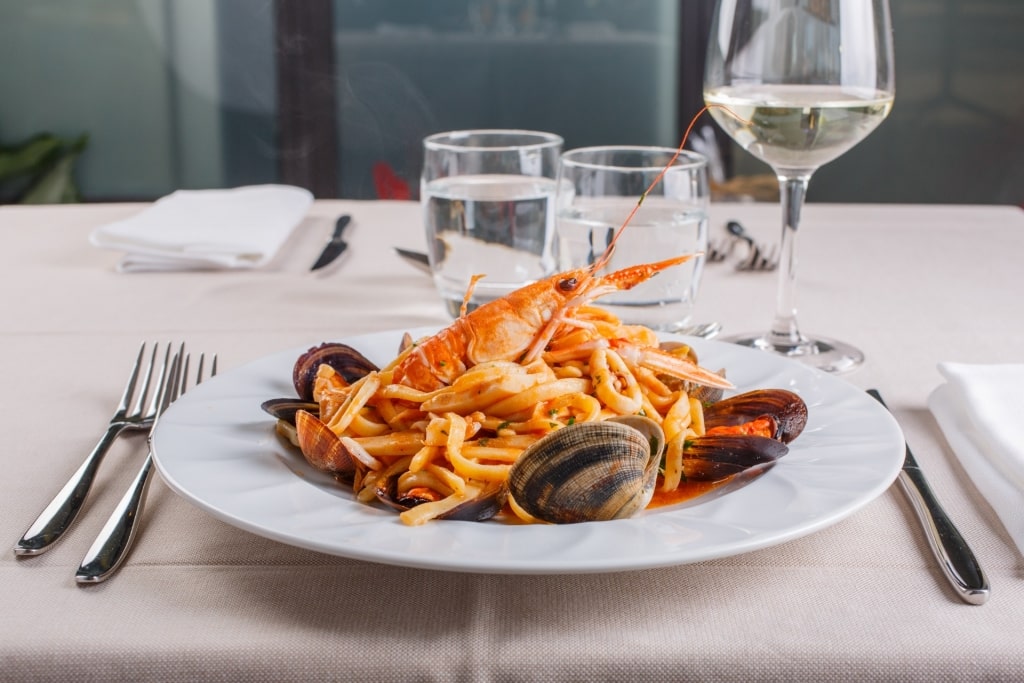
Scialatielli
The town is famous for one thing, although that is no small thing. Long a center for pasta-making, its speciality is the short, thick, slightly curved scialatielli, typically served with seafood, or with fresh tomatoes and mozzarella. This pasta is one souvenir you can’t leave without trying—and buying from one of the bustling local markets.
Hike the Valle de Ferriere
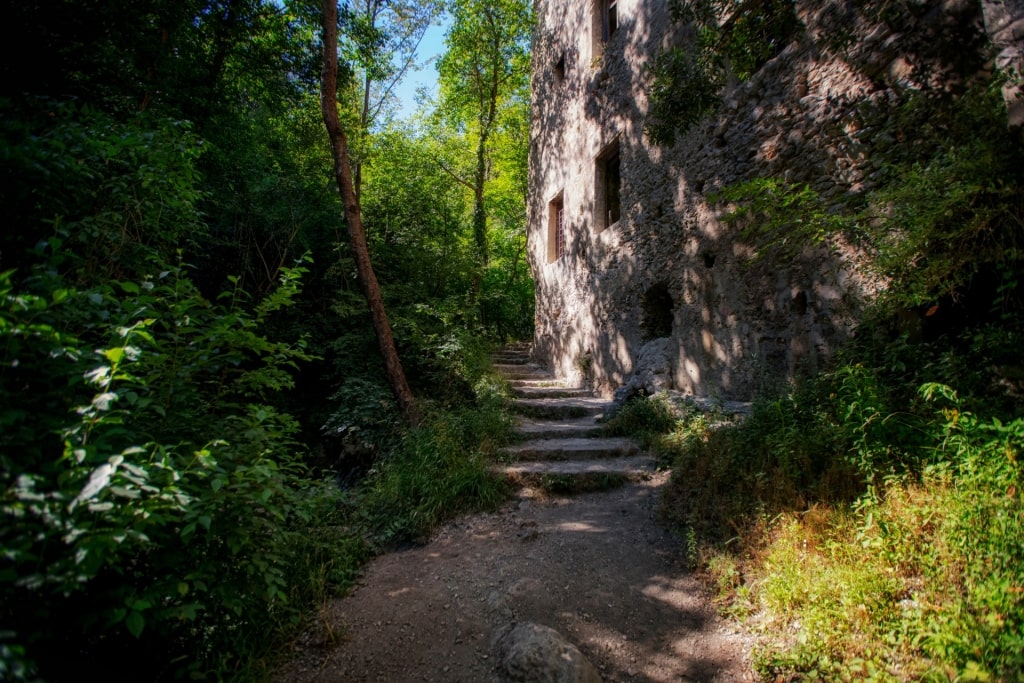
Valle de Ferriere
Hiking is one thing you might not expect to find on the Amalfi Coast. In which case, the nature reserve of Valle de Ferriere will be a surprise as it is one of the best hikes in Europe.
Valle de Ferriere is named for an old ironworks, visible on the two-hour walk between the coastal Italian towns of Amalfi and Ravello. That iron was a source of wealth to the Amalfi Republic of the 10th and 11th centuries.
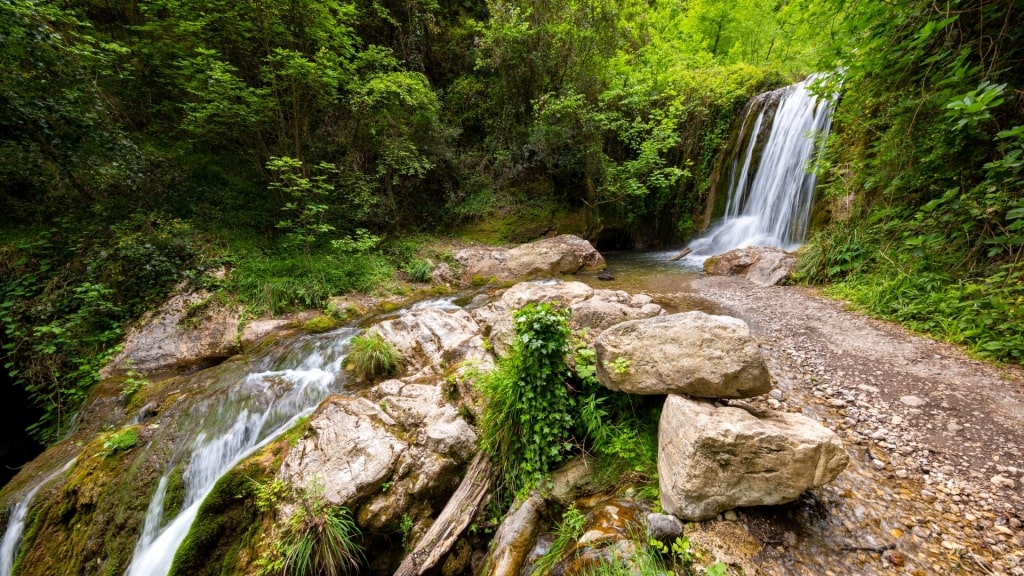
Valle de Ferriere
The walk passes through lemon groves and past rock pools before reaching the Valle de Ferriere nature reserve. During summer in Italy, the waterfalls and shady glades are the perfect place to cool off.
The river running here, a rare sight on this coast, once powered waterwheels. These were literally the driving force behind Amalfi’s famous paper industry.
Live the Dream in Positano
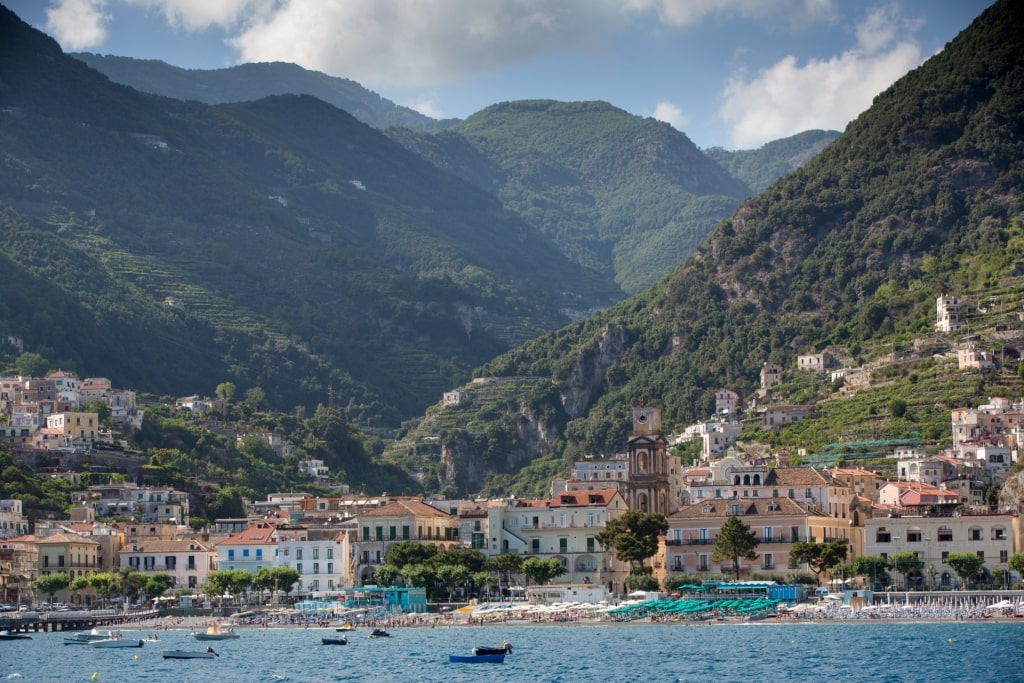
Positano
If a picture is worth a thousand words, how many words are needed to best describe Positano? The multicolored houses tumbling down sheer cliffs to the sparkling Mediterranean is one of the most-photographed sights on the planet.
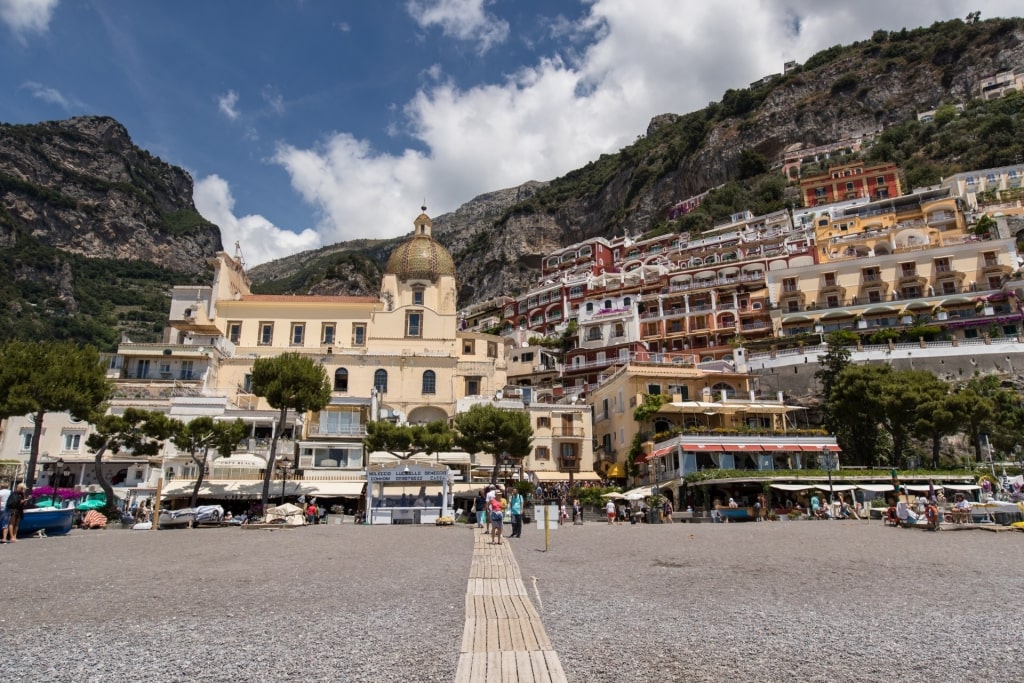
Positano
From a distance, the seaside village does seem like one superb artistic vision. Get into its streets, however, and you find the wonderful individuality of any thriving community.
Workshops make and sell ceramics, while restaurants produce local specialties such as spaghetti alla vongole. Bakeries turn out delightful pastries, and artisans make handmade sandals while you wait.
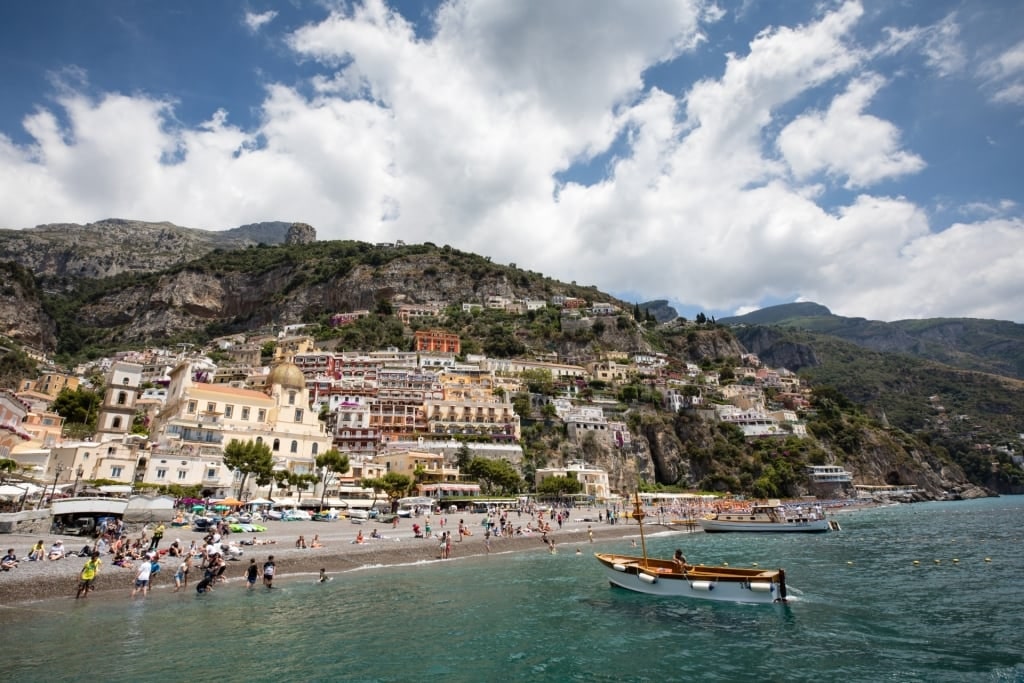
Positano
Of course, Positano has perfect beaches, one of the many reasons the Amalfi Coast is known as one of the best beach destinations in Europe. Follow the steps down to Spiaggia del Fornillo, Spiaggia Grande, or the hidden gem of Spiaggia di Laurito to enjoy your own share of the dream.
Read: Best Things to Do in Positano
Go Full Italian in Atrani
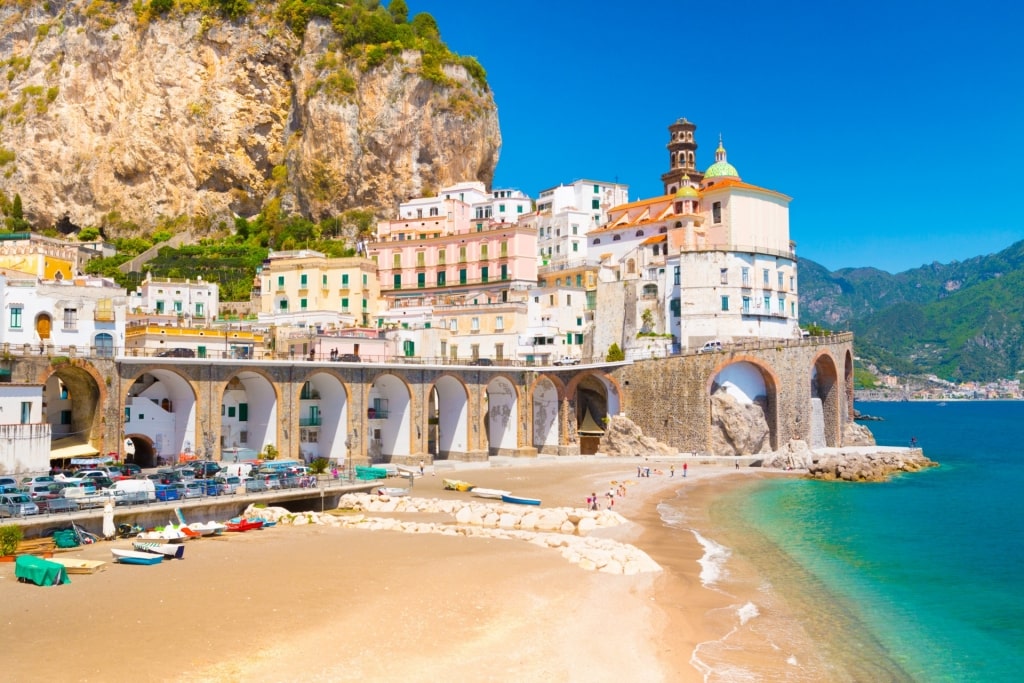
Atrani
Atrani is so typically and beautifully “Italian” that it is regularly used for TV commercials. So its baroque churches, atmospheric cafés and cozy piazzas will seem instantly familiar.
Its wide sandy beach fans out from a viaduct carrying the Amalfi Coast Road. Jammed into clefts in the cliffs, the town climbs the mountain on worn “scalinatella” steps.
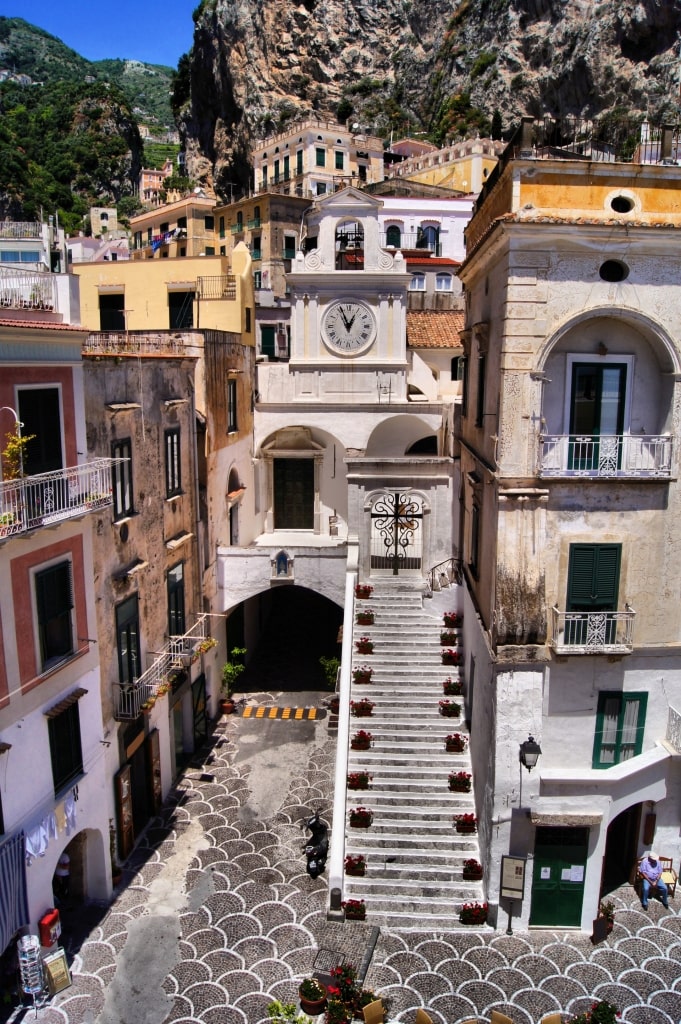
Piazza Umberto I, Atrani
At its heart is Piazza Umberto I, which has somehow managed to keep its village atmosphere. It’s a short drive from Amalfi, but can seem a million miles away from that busier neighbor.
Walk the cobbles to find a church hosting a wedding, or a café where there’s an argument about a soccer match. Or sit by a fountain and take a large part of what makes this Amalfi coast special.
Find Saucy Fish in Cetara
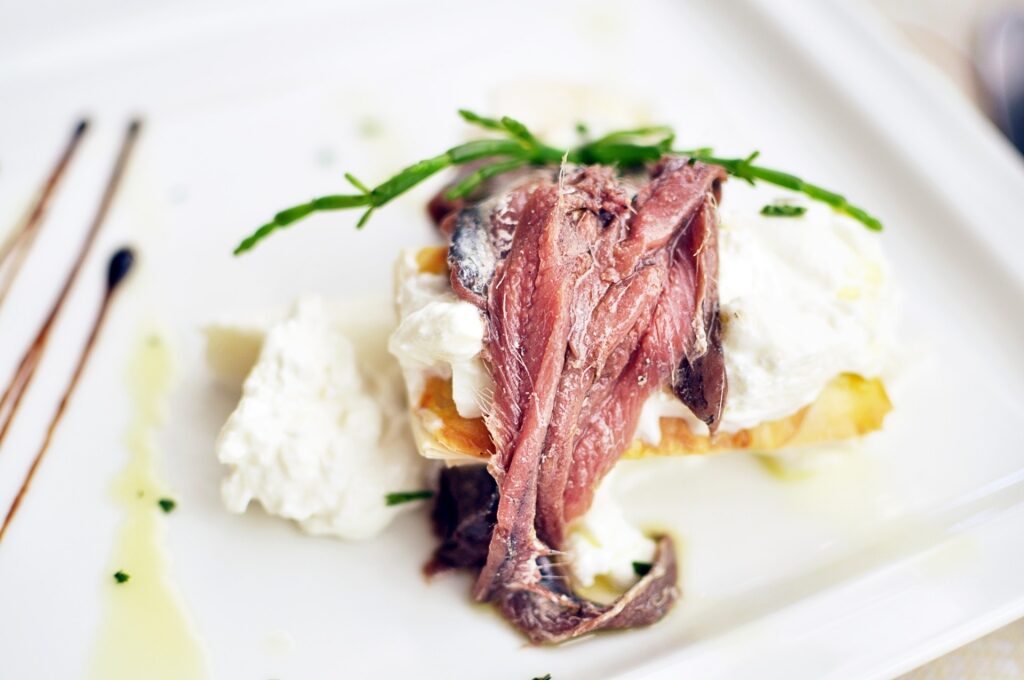
Anchovy
While hard to believe, several villages along this busy coast retain a fishing fleet. Cetara, whose very name comes from the Latin for tuna, is one of them.
Tuna is caught here by hand and exported all over the world. Highly prized in Japan, it’s a must-try for many visitors.
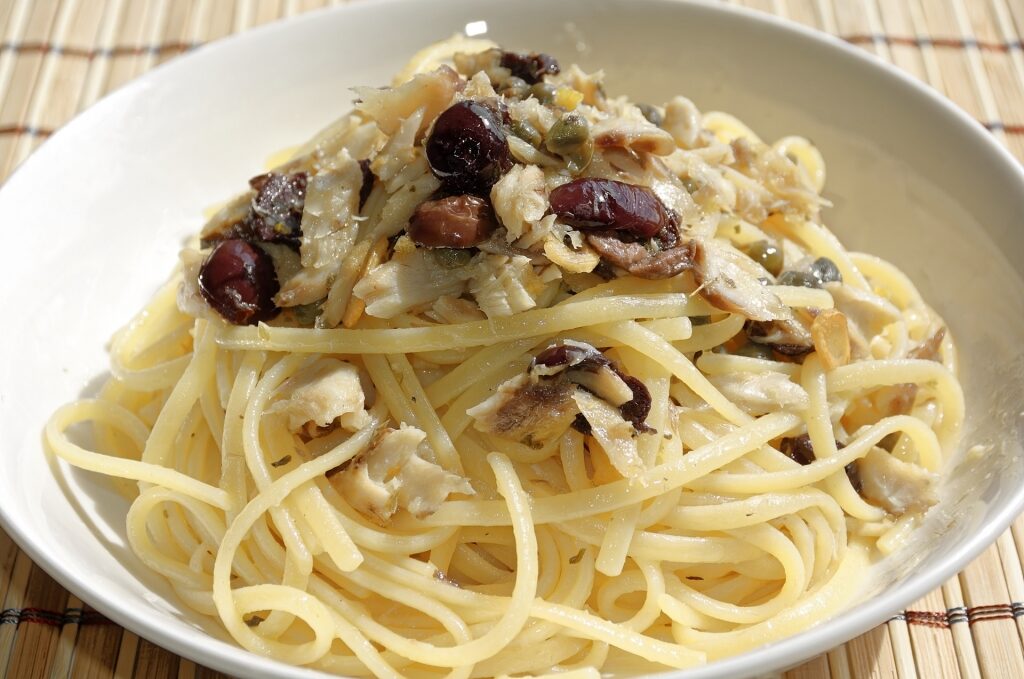
Colatura di alici
The village is also famed for colatura di alici, an anchovy-based fish sauce. Its umami flavor makes it popular with chefs, both amateur and professional.
The perfect complement to fresh fish is lemon, so it’s no surprise Cetara grows the local “sfusato amalfitano” variety. With a distinctive shape and flavor, you can also enjoy it in limoncello, the local lemon-flavored liqueur that Italy is known for.
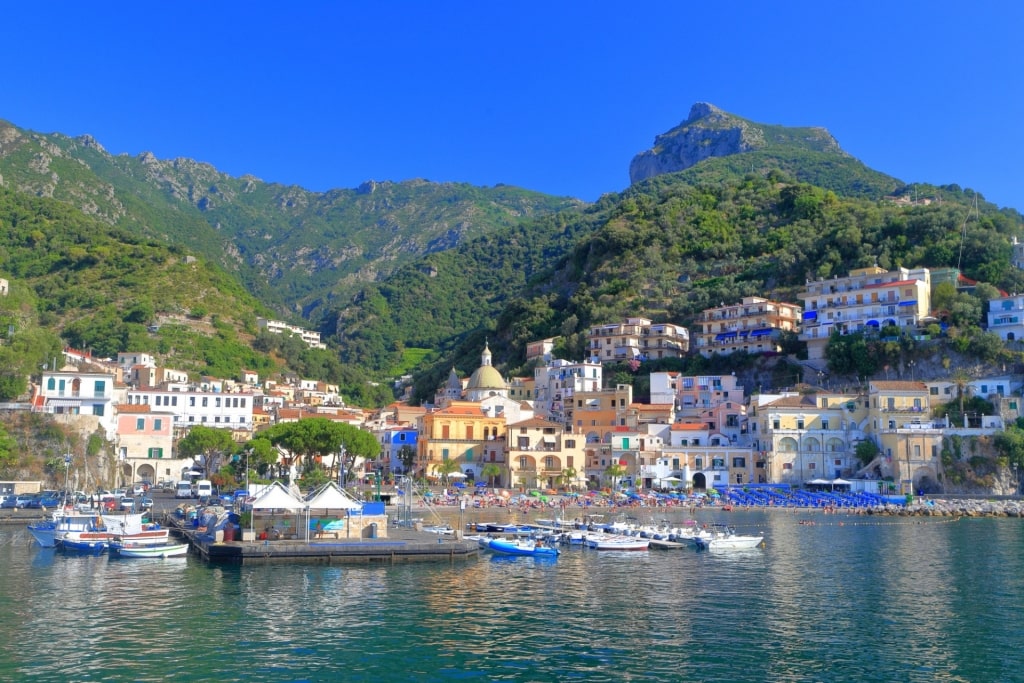
Cetara
To walk off any over-indulgence, Cetara has a number of impressive monuments to discover. These include a 13th-century tower built to guard against pirates, now a museum.
Admire the Murals of Furore
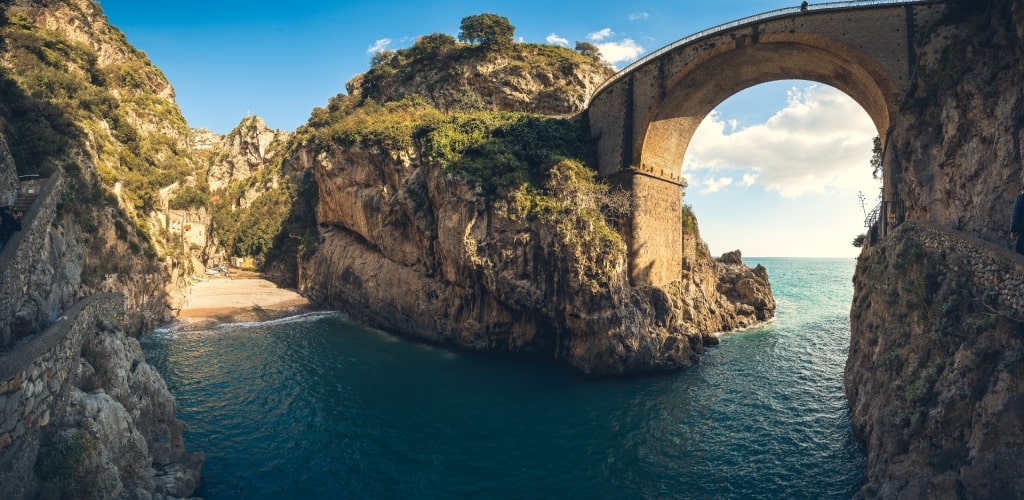
Furore
Furore is a town that is split into two by the coastal road. One part is in the mountains, the other by the sea, linked by thousands of steps.
The seaward part, Fiordo di Furore, is at the end of a “fjord”, a tiny, steep-sided bay. Sunbathers share the beach—reached by 200 steps—with wooden boats belonging to fishermen.
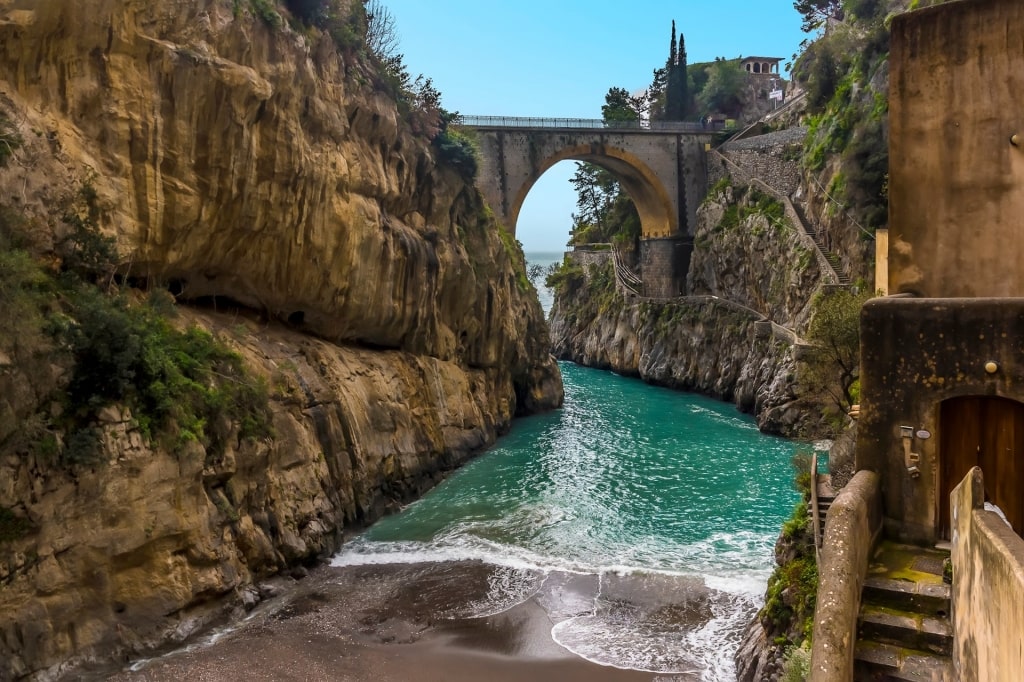
Furore
The 100-foot-high bridge across the gorge is the venue for an annual high dive contest. The town’s three churches are a quieter, more enduring experience.
Furore was put on the map in the 1980s by its colorful murals, many now done by international artists, depicting its history and life along the coast. They give it the name of “Furore Paese dipinto” (Furore, the Painted Village).
Float Through the Emerald Grotto
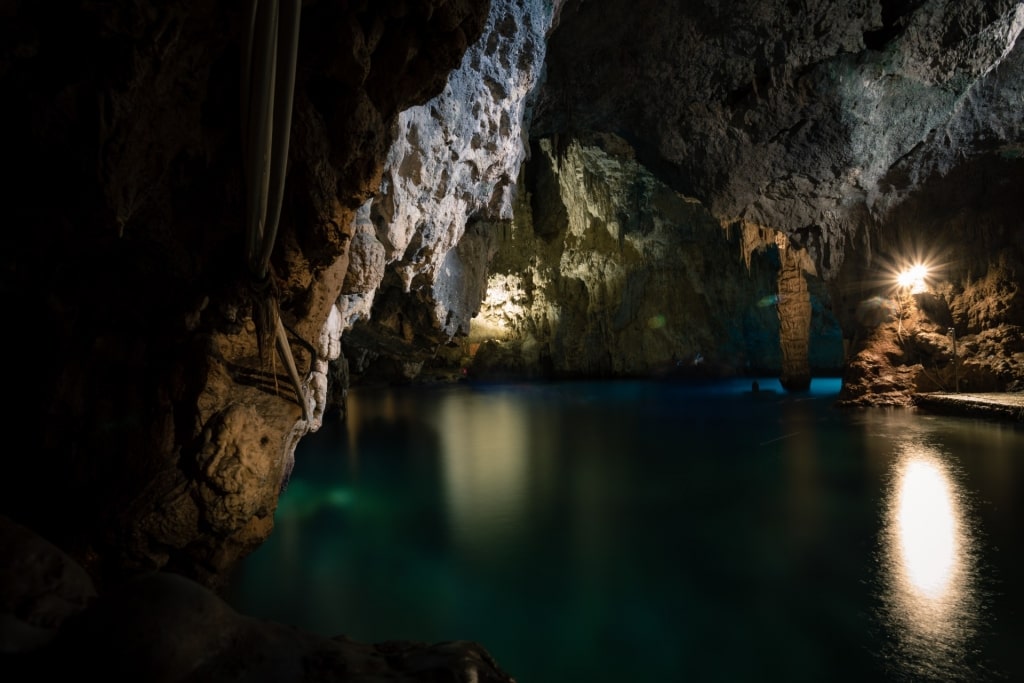
Grotta dello Smeraldo
Grotta dello Smeraldo is a few miles outside Amalfi near the village of Conca dei Marini. It’s a beautiful cave—a cousin to Capri’s Blue Grotto—where the sparkling Mediterranean casts a green light.
The cave was discovered by a local fisherman in the 1930s and is visited in row boats. The stalagmites and stalactites make for an impressive sight.
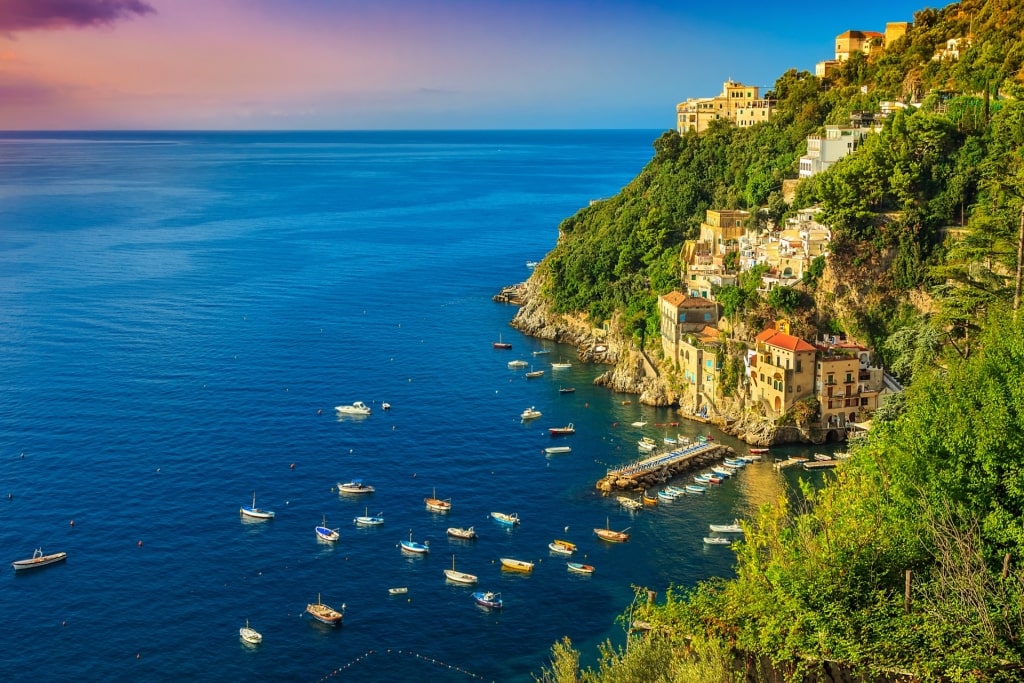
Conca dei Marini
Now somewhat overshadowed by the Emerald Grotto, Conca dei Marini is worth a visit in itself. Picturesque houses cling to the rocks in a spectacular setting, even by the high Amalfi standards.

Sfogliatella Santa Rosa
While a quiet fishing village, it became popular with the likes of Jacqueline Onassis Kennedy and Princess Margaret. It is also the birthplace of Sfogliatella Santa Rosa, a creamy pastry created by nuns in 1681.
Enjoy a Lingering Coffee in Ravello
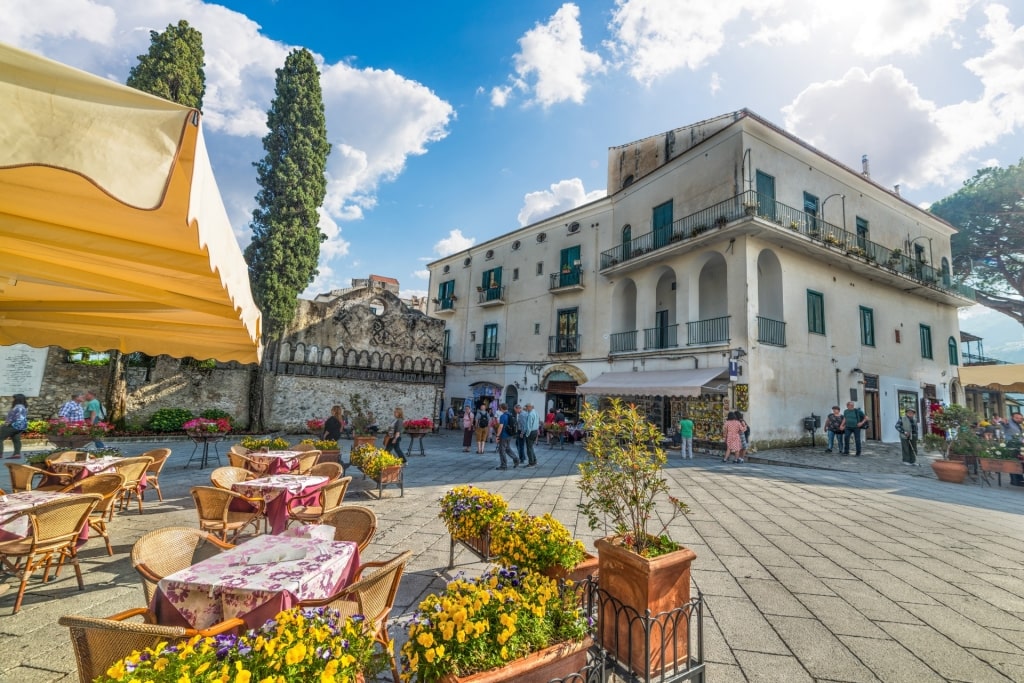
Ravello
Picturesque historical center? Tick. Medieval duomo full of art? Tick. Aristocratic villas, with great views? Tick.
Ravello might sound like just another beautiful Amalfi Coast town. And it is. But it stands out for just how lovely all those attractions are.
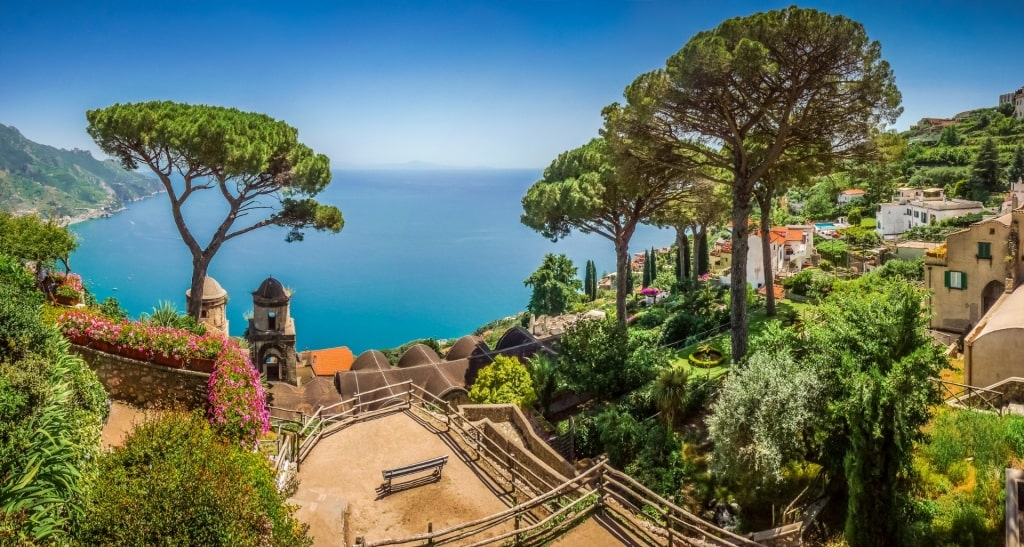
Villa Rufolo, Ravello
The views from Villa Cimbrone have been called the best on the Amalfi Coast. Others say it’s the view from the beautiful Italian garden of Villa Rufolo, where Wagner found the inspiration for the magical garden in his opera “Parsifal”.
The 11th-century cathedral has a plain exterior but 12th-century bronze doors that are a masterpiece of the art. Inside, the mosaics on the pulpit and elsewhere are magnificent.
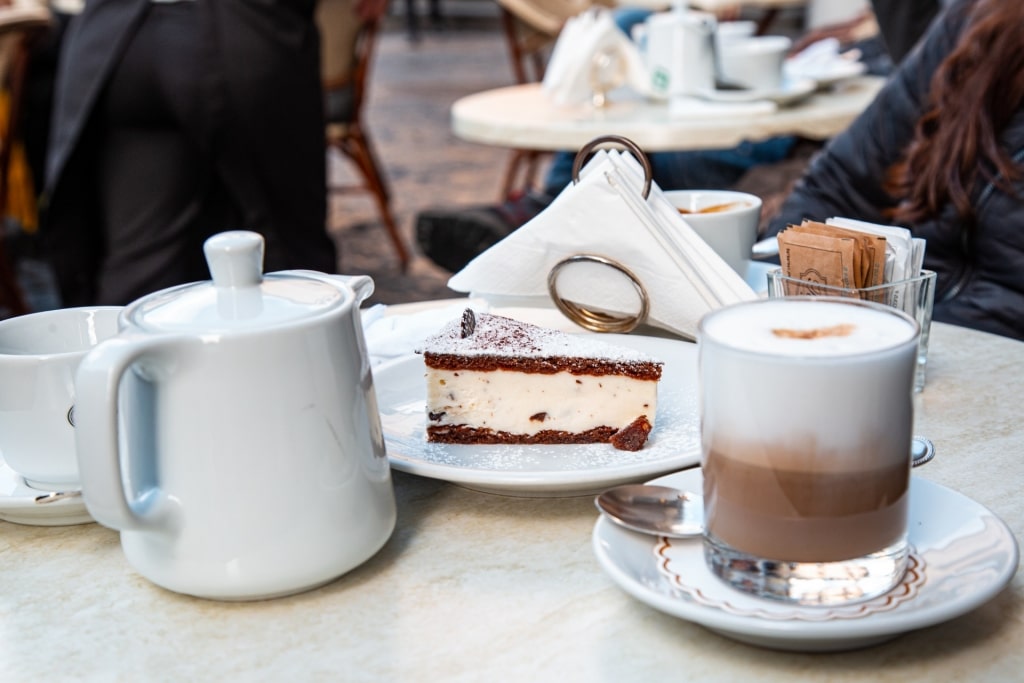
Coffee
Outside the duomo you’ll find a piazza with several cafés to sit and order Italian coffee, taking in the life of this lovely hilltop town. You might understand why author Gore Vidal spent 30 years here, hosting everyone from Johnny Carson to Lauren Bacall.
Walk Through Salerno
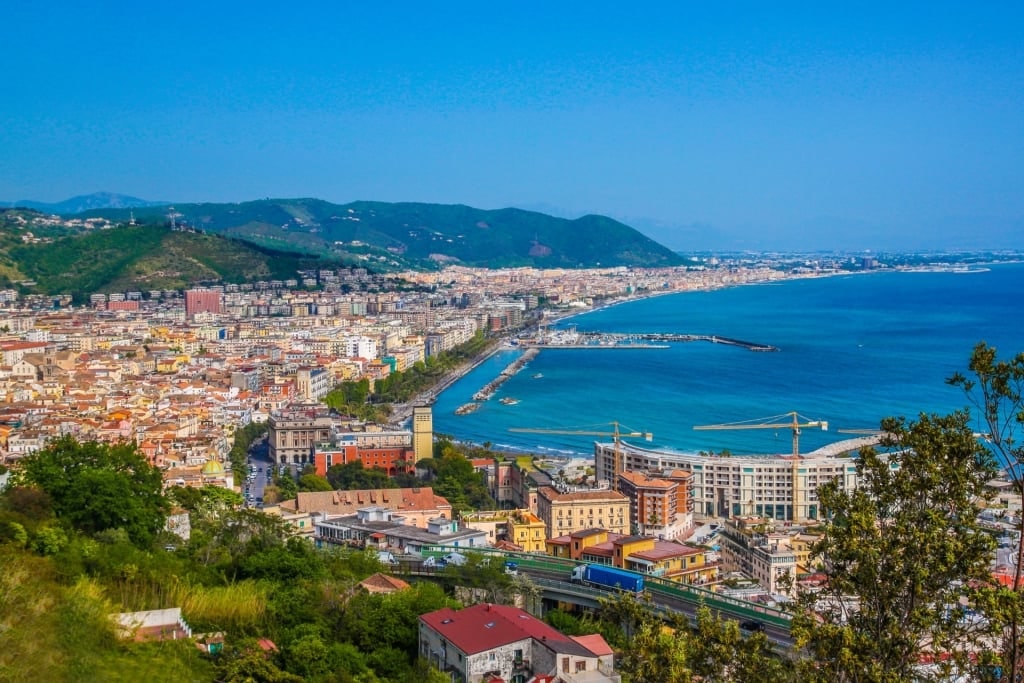
Salerno
Just beyond the official eastern end of the Amalfi Coast, Salerno is well worth the short extension. It has a centro storico (historic center) to compare to Naples, but a more modern infrastructure, including a subway.
With fewer visitors than Naples, the city appeals to those looking for a more authentic experience. You can see it in the restaurants, filled with locals, and the atmosphere in the streets.
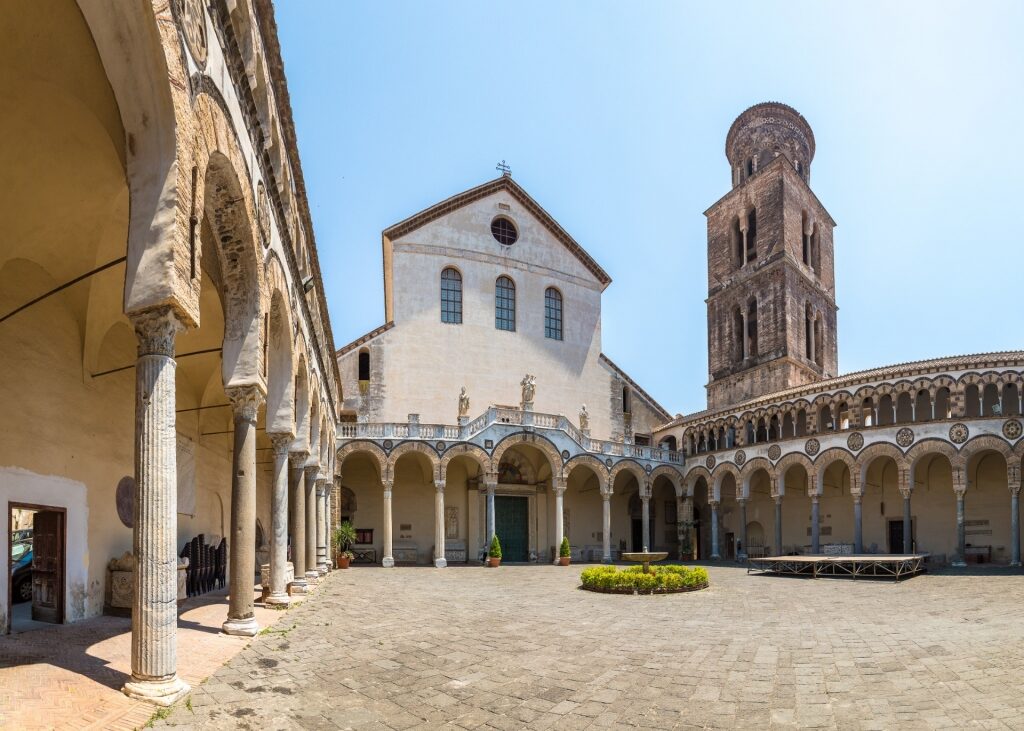
Duomo, Salerno
Explore the narrow winding alleys of the historical center to find charming cafés and interesting small shops. The Duomo at its heart has an underwhelming interior, but an overwhelming interior.
Then walk the Lungomare, the concrete seawall along the Gulf of Salerno. Tree-lined and modern, it’s filled with people walking, jogging or just sitting to enjoy the lovely views.
Learn About Limoncello in Sorrento

Limoncello in Sorrento
Sorrento has been a popular seaside resort since Roman times, praised by Horace for its wines. You visit it in the steps of visitors such as Lord Byron, Charles Dickens, Harriet Becker Stowe, and Nietzsche.
Besides being a lovely town to walk around, with green parks and expansive views, it’s a great base for exploring further. Take a sightseeing boat along the coast, or the ferry to Capri to enjoy the Blue Grotto.
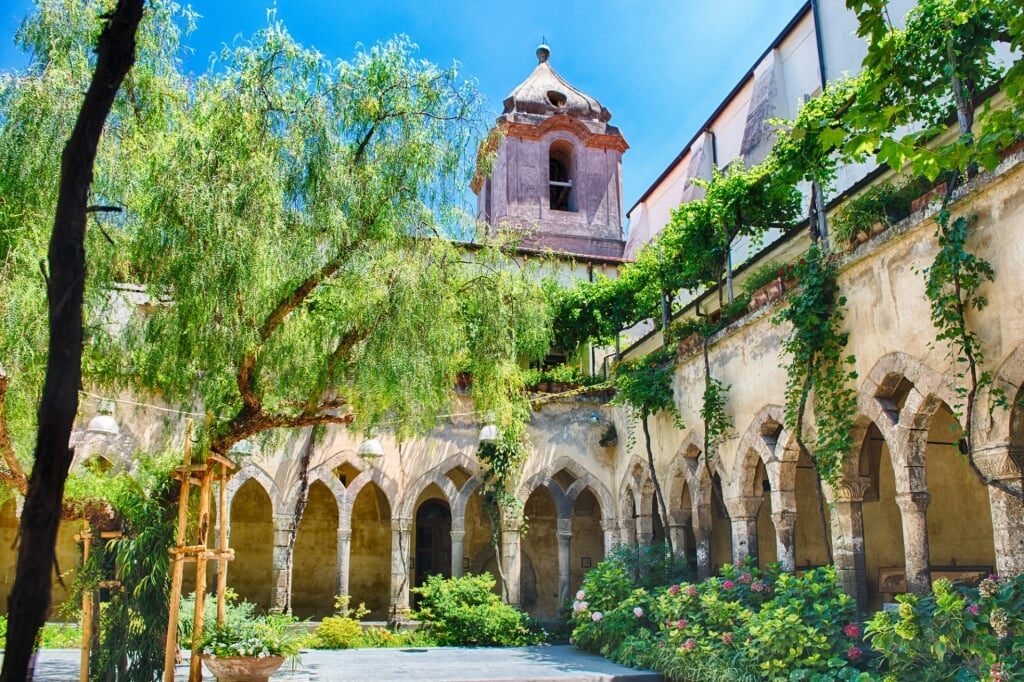
Chiostro di San Francesco, Sorrento
Sorrento’s notable buildings include the Chiostro di San Francesco, often a venue for concerts, and the 11th-century Basilica Sant’Antonino. The Correale Museum—with a great collection of paintings, ceramics and glassware—is worth seeing just for the view from its terrace.
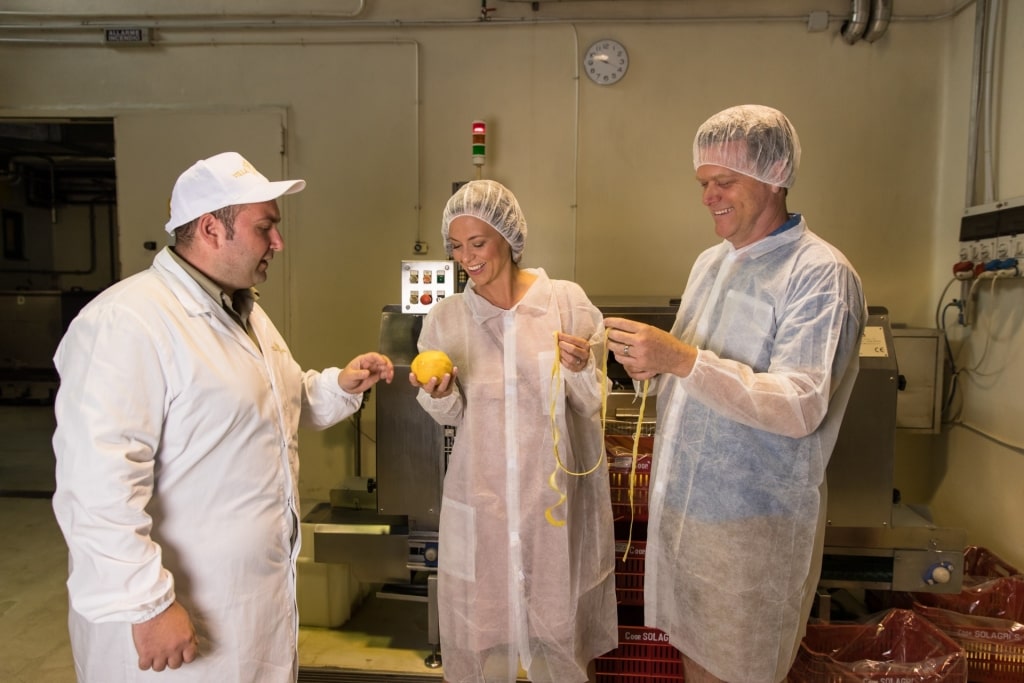
Limoncello tour in Sorrento
Sorrento is also the place to learn more about the limoncello liqueur, the history of which goes back “only” to 1900. Lemon trees have much deeper roots here, literally, having been planted to stabilize the steep hillside terraces.
Read: Best Things to Do in Sorrento
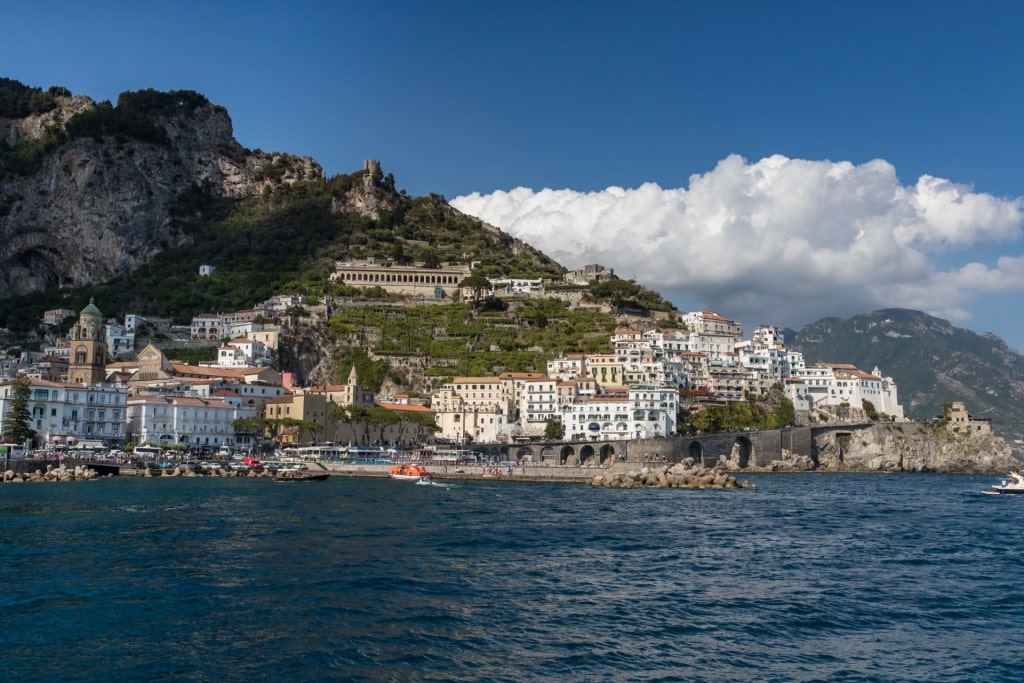
Amalfi
Has this taste of the best things to do on the Amalfi Coast inspired you to visit? Then browse Celebrity’s cruises to the Amalfi Coast to transport you to this stylish land of lemons, sunshine, and sea views.
